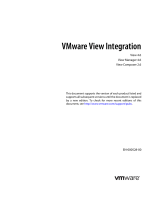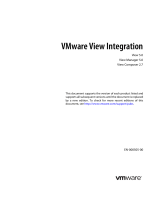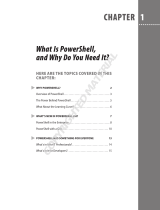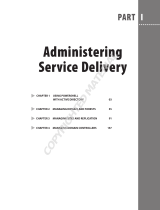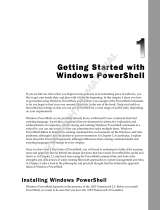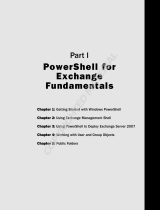
Table 2‑4. Connection Broker Events (Continued)
Event Type Severity ModuleAndEventText
BROKER_PROVISIONING_ERROR_DISK_SET WARNING Provisioning error occurred on Pool ${DesktopId} because of
a disk problem
BROKER_PROVISIONING_ERROR_LICENCE_CLE
ARED
INFO The previously reported licensing problem is no longer
present on Pool ${DesktopId}
BROKER_PROVISIONING_ERROR_LICENCE_SET ERROR Provisioning error occurred on Pool ${DesktopId} because of
a licensing problem
BROKER_PROVISIONING_ERROR_NETWORKING
_CLEARED
INFO The previously reported networking problems with
Horizon Agent are no longer present on Pool ${DesktopId}
BROKER_PROVISIONING_ERROR_NETWORKING
_SET
ERROR Provisioning error occurred on Pool ${DesktopId} because of
a networking problem with Horizon Agent
BROKER_PROVISIONING_ERROR_RESOURCE_CL
EARED
INFO The previously reported resource problem is no longer
present on Pool ${DesktopId}
BROKER_PROVISIONING_ERROR_RESOURCE_SE
T
ERROR Provisioning error occurred on Pool ${DesktopId} because of
a resource problem
BROKER_PROVISIONING_ERROR_TIMEOUT_CUS
TOMIZATION_CLEARED
INFO The previously reported timeout while customizing is no
longer present on Pool ${DesktopId}
BROKER_PROVISIONING_ERROR_TIMEOUT_CUS
TOMIZATION_SET
ERROR Provisioning error occurred on Pool ${DesktopId} because of
a timeout while customizing
BROKER_PROVISIONING_ERROR_VM_CLONING ERROR Provisioning error occurred for Machine ${MachineName}:
Cloning failed for Machine
BROKER_PROVISIONING_ERROR_VM_CUSTOMI
ZATION_ERROR
ERROR Provisioning error occurred for Machine ${MachineName}:
Customization failed for Machine
BROKER_PROVISIONING_ERROR_VM_CUSTOMI
ZATION_NETWORKING
ERROR Provisioning error occurred for Machine ${MachineName}:
Customization error due to no network communication
between Horizon Agent and Connection Server
BROKER_PROVISIONING_ERROR_VM_CUSTOMI
ZATION_TIMEOUT
ERROR Provisioning error occurred for Machine ${MachineName}:
Customization operation timed out
BROKER_PROVISIONING_SVI_ERROR_COMPOSE
R_AGENT_INIT_FAILED
ERROR Provisioning error occurred for Machine ${MachineName}:
View Composer agent initialization failed
BROKER_PROVISIONING_SVI_ERROR_RECONFIG
_FAILED
ERROR Provisioning error occurred for Machine ${MachineName}:
Reconfigure operation failed
BROKER_PROVISIONING_SVI_ERROR_REFIT_
FAILED
ERROR Provisioning error occurred for Machine ${MachineName}:
Refit operation ${SVIOperation} failed
BROKER_PROVISIONING_SVI_ERROR_
REMOVING_VM
ERROR Provisioning error occurred for Machine ${MachineName}:
Unable to remove Machine from inventory
BROKER_PROVISIONING_VERIFICATION_
FAILED_USER_ASSIGNED
WARNING Provisioning verification failed for Machine $
{MachineName}: User is already assigned to a machine in
Pool ${DesktopId}
BROKER_PROVISIONING_VERIFICATION_
FAILED_USER_CANNOT_BE_ASSIGNED
WARNING Provisioning verification failed for Machine $
{MachineName}: A user cannot be assigned because Pool $
{DesktopId} is not persistent
BROKER_PROVISIONING_VERIFICATION_
FAILED_VMNAME_IN_USE
WARNING Provisioning verification failed for Machine $
{MachineName}: A machine already exists in Pool $
{DesktopId} with name ${MachineName}
BROKER_SECURITY_SERVER_ADD_FAILED AUDIT_FAIL Failed to add security server ${SecurityServerId}
BROKER_SECURITY_SERVER_ADD_FAILED_
PASSWORD_EXPIRED
AUDIT_FAIL Failed to add security server ${SecurityServerId}, pairing
password expired
BROKER_SECURITY_SERVER_ADD_FAILED_
PASSWORD_INCORRECT
AUDIT_FAIL Failed to add security server ${SecurityServerId}, pairing
password incorrect
View Integration
14 VMware, Inc.





















